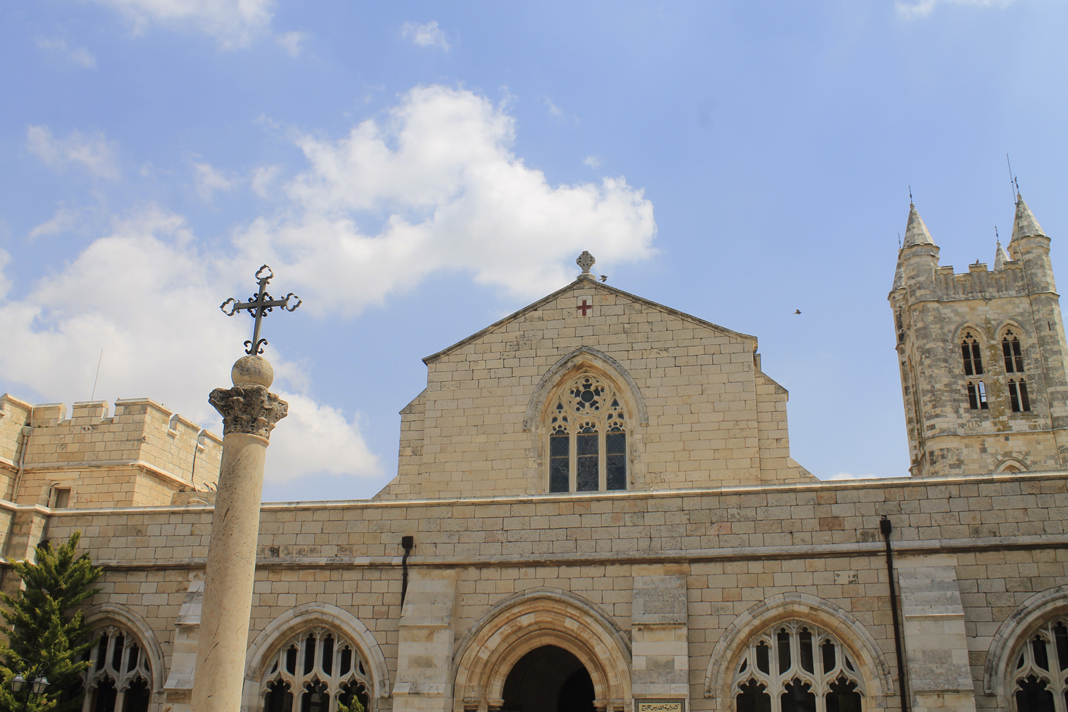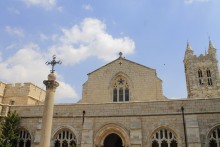This article takes you outside the walls of the Old City of Jerusalem and gives the opportunity to explore the development outside the city walls during the second half of the 19th century and the first half of the 20th century. During this period, the traditional building styles of the Ottoman era and prior to it were replaced by new imported European styles that reflected the identity, heritage and architectural of the builder’s country of origin rather than matching the spirit and traditions of Arab architecture. But they remain an important contribution to the architectural development of the city. Whatever the changes in the details and plans of the architectural fabric, stone remained king as the building material of choice, assuming roles in shape, masonry and engraving.
One building among many that form the European mosaic architecture in Jerusalem is the St. George’s Cathedral.
St. George’s Cathedral (St. George’sSchool) 1898
To arrive at this station among many in the Mosaic Trail, approach the end of Saladin Street and the beginning of Nablus Road. The tower of St George’s Cathedral is visible among the trees, with its four conical corners topped by crosses.
The entrance to the grounds of St. George’s Cathedral, which comprises a large compound with a hostel, a church, a tower, sports facilities, a large school and other services.
Going through the entrance, a visitor will immediately recognize the modern Gothic architectural style of 19th century Europe, typical of Oxford and British Anglican buildings. The design of the tower, the courtyard and the surroundings give the impression that they were transplanted from a church in the British countryside.
Passing through a triple-arch entrance, a square courtyard opens out surrounded by three corridors with ornamented windows. In the middle of the square is a cylindrical column topped by a Corinthian-style crown holding a stone globe with a cross. This is a building with solid dimensions, evident in the pillars supporting the walls, the levels of multi-arches, the double pillars supporting these arches, the balconies in the upper part of the building and the church bell tower.
To read more about the Mosaic Architecture in Jerusalem, visit: St. George’s Cathedral



